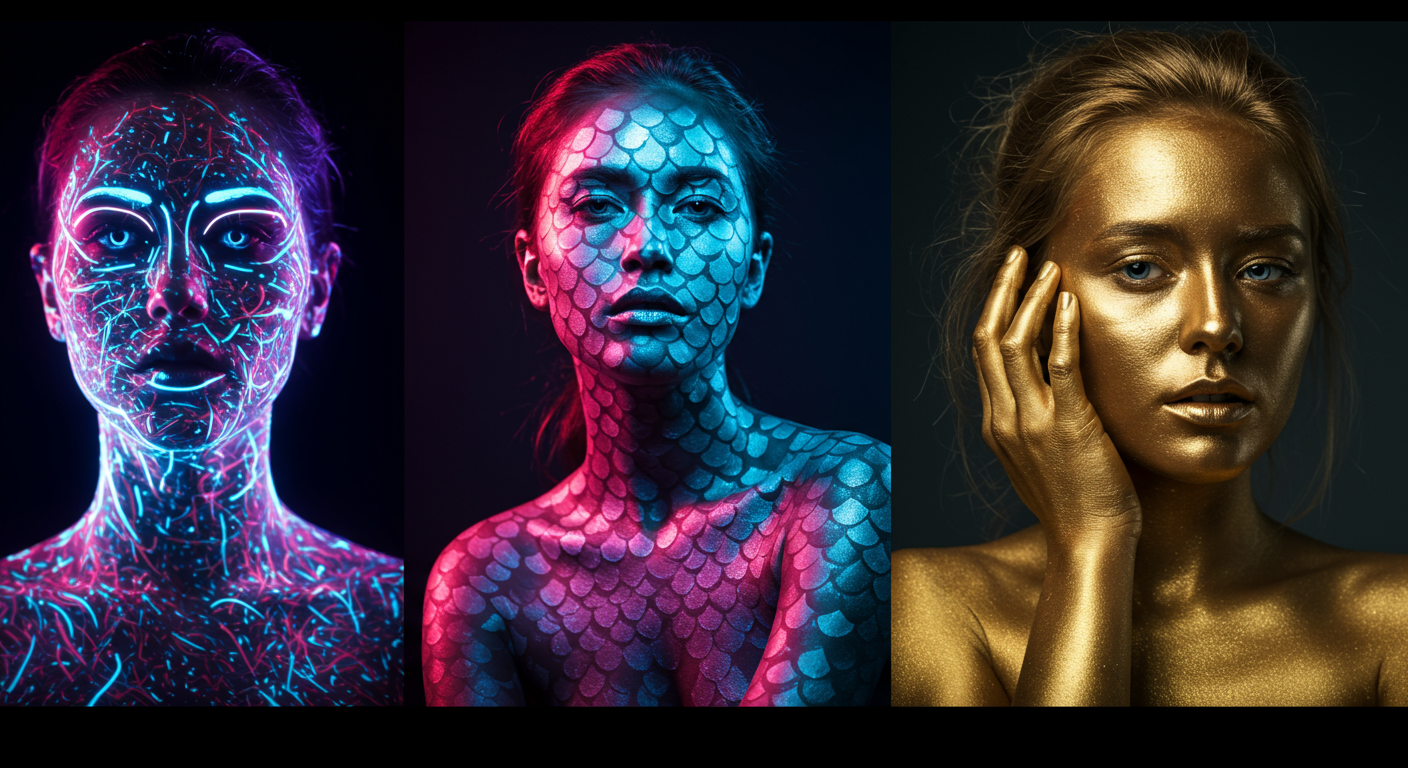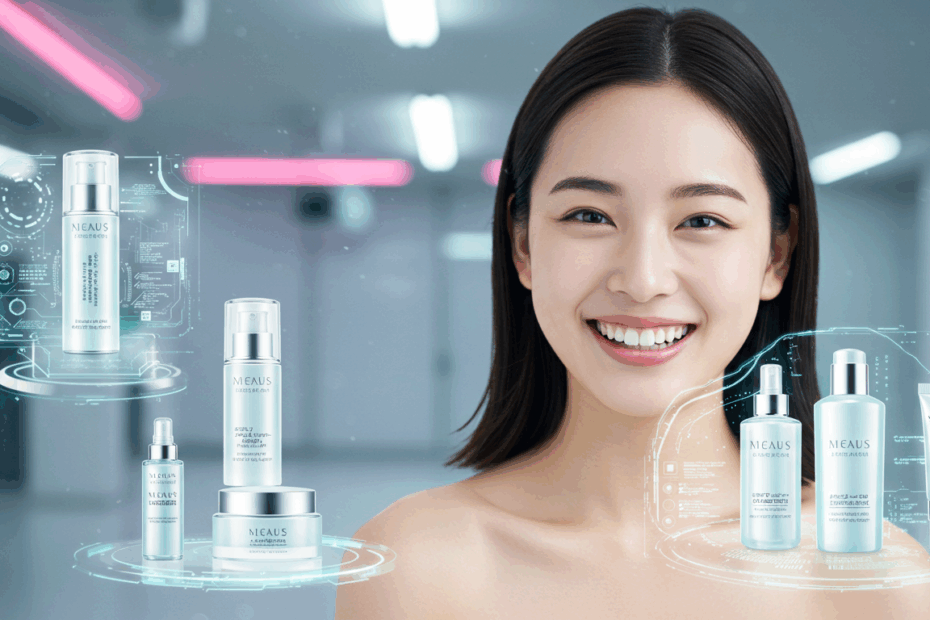More Than Skin Deep: Embracing the “Skin, Evolves” Lifestyle for a More Responsive You
John: In our line of work, Lila, we see trends come and go at lightning speed. But every so often, a concept emerges that feels less like a trend and more like a fundamental shift in understanding. I’ve been digging into one recently that’s being called the “skin, evolves” lifestyle. It’s a compelling idea, moving beyond rigid routines to embrace a more fluid, responsive approach to self-care.
Lila: “Skin, evolves.” I like the sound of that. It feels organic. But what does it mean in practice? When I hear that, my mind immediately goes to skincare products. Are we just talking about switching your moisturizer when the weather changes?
John: That’s certainly part of it, but it’s the tip of the iceberg. At its core, this is a philosophy that recognizes our bodies, and particularly our skin, are in a constant state of flux. It’s an acknowledgment of what clinics and brands are increasingly saying: “Your skin evolves with every stage of life,” as Avah Skin Clinic puts it, and as BASF notes, “Your skin evolves with time, so should your routine.” The lifestyle extends this principle beyond the product shelf. It’s about becoming a student of your own biology and environment, and adapting your habits—not just your products—accordingly.
Lila: So, it’s a metaphor for personal growth, using our skin as the starting point? The idea that we’re not static beings, and our self-care should reflect that continuous change. That feels much bigger than just skincare.
John: Precisely. You’ve hit on the core of it. The “skin, evolves” lifestyle is a holistic framework. It encourages us to listen to the feedback our body gives us. Our skin is an incredibly honest messenger, reflecting our internal state, our environment, and our age. The philosophy is about learning to interpret that message and respond with care and intelligence. It beautifully reframes the goal from fighting aging to gracefully managing evolution. As a beauty concept by Ena Jović on Instagram so aptly put it: “Because great skin never ages — it evolves.” That’s the mindset we’re exploring today.
Lila: Okay, I’m intrigued. So before we get into the “how,” we need to understand the “why.” What’s the science behind this? What’s actually happening that makes our skin so… dynamic?
John: An excellent starting point. The foundation is purely biological. Our skin is not a fixed, inanimate covering; it’s our largest, most exposed organ, constantly mediating between our internal world and the external environment. This process of change is baked into our very DNA. If you look at human history on a grand scale, you can see this principle at work. A Reddit discussion on biology highlighted a classic example: the evolution of skin pigmentation. Darker skin, rich in melanin, evolved as a crucial adaptation to intense sunlight in equatorial regions. Conversely, as a commenter noted, “Paler skin evolved again in people who moved out of Africa to regions with less sunlight in order to have better Vitamin D absorption.” Our skin has always evolved over millennia to suit its environment.
Lila: That’s fascinating, but it’s a slow, evolutionary process over thousands of years. What about the changes we can actually see in our own lifetimes? The ones that happen year to year, or even month to month? How does that long-term principle apply to us right now?
John: It operates on a micro-scale as well. The most immediate and relatable example is seasonal change. A Facebook post from Rustic Riverside Mercantile captured this perfectly: “Your skin evolves with the seasons—and so should your skincare.” Think about it. In winter, the air is cold and dry, and indoor heating depletes humidity. This strips moisture from your skin, compromising its protective barrier, leading to dryness, flakiness, and irritation. Your skin’s primary need is hydration and protection. In contrast, summer brings heat and humidity. Your skin may produce more oil, pores can feel more congested, and the primary environmental aggressor becomes UV radiation. Its needs shift from heavy-duty hydration to lightweight moisture, oil control, and robust sun protection.
Lila: That same Facebook source mentioned something about “skin adaptation,” saying that “Using the same products for too long can lead to skin adaptation, reducing their effectiveness.” That sounds a bit like a myth I’ve heard, that your skin gets “used to” products. Is that what’s happening? Does it build up a tolerance?
John: That’s a common misconception, and “adaptation” is perhaps a slightly misleading term. Your skin doesn’t develop immunity to a good ingredient. What actually happens is that your skin’s *condition* changes, so the product is no longer targeting the right problem. For instance, if you use a powerful hydrating serum to fix a dehydrated, damaged skin barrier, it might work wonders initially. But once the barrier is repaired and healthy, its needs change. It no longer requires that intense level of intervention. The product hasn’t become less effective; your skin has simply “evolved” to a new state. The target has moved, so you need to adjust your aim. It’s less about product fatigue and more about your skin’s evolving needs.
Lila: That makes so much more sense. It’s not the product failing, it’s you succeeding! So, besides the daily and seasonal cycles, the other huge factor must be aging. Multiple sources in the SERPs, like from KANE Medical Aesthetics and So Morocco, pointed out that our skin’s needs change dramatically as we go through different decades.
John: Absolutely. Age is the most profound long-term evolution we experience personally. KANE Medical Aesthetics frames their monthly plans around the “science of aging,” and for good reason. Each decade brings significant physiological shifts. In our 20s, cell turnover is high and collagen production is robust; the focus is on protection and prevention. Then, as a reel from So Morocco elegantly described, our skin’s requests change. In our 30s, when collagen and elastin production begins its slow decline, the skin “asks for balance.” In our 40s, as the skin barrier can become more fragile, it “craves calm.” And in our 50s, when hormonal changes can lead to significant dryness and loss of density, it “needs deep comfort.” These aren’t just poetic descriptions; they’re reflections of deep biological changes that demand an evolving approach to care.
Lila: So the evidence is clear. From our evolutionary past to the changing seasons and the decades of our lives, our skin is a constantly changing canvas. It’s a living record of our journey. That really sets the stage for why a static, one-size-fits-all routine is fundamentally flawed.
John: Precisely. Understanding this biological imperative is the first step. The next is translating that understanding into a practical, everyday philosophy. This is where we move from the science of skin to the art of the “evolves” lifestyle.

John: Now that we’ve established the ‘why’—the constant biological flux—we can delve into the ‘how.’ How do we practice the “skin, evolves” philosophy? It begins with a shift in mindset, from being a passive consumer following a prescribed regimen to an active, mindful observer of your own body. It’s about cultivating a daily check-in with your skin, much like you might check the weather before getting dressed. You don’t wear a winter coat in July, and you shouldn’t apply a heavy, occlusive cream when your skin feels oily and congested.
Lila: I love that analogy. It’s less about a rigid, unchanging ‘holy grail’ routine and more like having a versatile wardrobe of options. So it’s a move from ‘set it and forget it’ to ‘listen and respond.’ That sounds incredibly intuitive, but I can also see how it might feel overwhelming for someone used to a simple 3-step system. Where does one even start with this ‘listen and respond’ approach?
John: You start by simplifying. Instead of a long, complex routine, you focus on fundamentals and observation. Ask yourself simple questions in the morning: Does my skin feel tight and dry, or is it comfortable? Does it look red and irritated, or calm and even? Is it producing more oil than yesterday? The answers guide your choices for that day. This active participation is the core of the philosophy. It aligns with what some modern clinics are advocating. For example, Rise Medical Aesthetics states, “We don’t just hand you products – we empower you with education and understanding about your skin’s unique needs.” That empowerment is the goal.
Lila: That focus on education and empowerment seems to be a major shift in the beauty industry itself. I noticed in the research that the market seems to be evolving right alongside this philosophy. It’s moving away from the idea that one magic cream from a giant corporation will solve everything for everyone.
John: You’re absolutely right. The market is undergoing a significant transformation. ADP Cosmetics put it bluntly, saying that in a world with growing awareness of skin health, “the demand for generic cosmetic solutions has been left behind.” Consumers are becoming more discerning. They want transparency, efficacy, and products that align with their values. This is why, as a blog post by American Ostrich Farms notes, “Skin care has transformed to include natural, zero-waste products and more sustainable supply chains to appease discerning customers.” The “evolves” lifestyle isn’t happening in a vacuum; it’s being supported and driven by a more conscious market.
Lila: And it seems like some brands are literally building their entire identity around this concept. I saw “Evolve Beauty” and “Evolve Health and Wellness” in the results. Their names alone are a statement. They’re not just selling a product; they’re selling this exact philosophy of change and adaptation.
John: They are excellent examples of this philosophy in action. Evolve Beauty (Source 6) emphasizes its identity as “Award Winning Natural Skin Care Artisans,” offering “artisanal natural and organic beauty” products. The word “artisanal” itself suggests a thoughtful, bespoke, and mindful approach, which is a perfect fit for a user who is carefully selecting tools for their evolving needs. Then you have a company like Evolve Health and Wellness (Source 17), which takes the concept even deeper. They specialize in “personalized bioidentical hormone therapy.” This demonstrates that the principle of evolution and personalization isn’t just skin-deep. It extends to the complex internal systems, like our hormones, that have a profound impact on our skin’s health and appearance. It’s about addressing the root causes of change, not just the surface-level symptoms.
Lila: So when we talk about the ‘lifestyle,’ it really is a complete picture. It’s not just about the products you put on your face. It’s about understanding that your skin is reflecting your diet, your stress levels, your hormonal cycles, and your environment. Responding to your skin might mean getting more sleep, changing your diet, or even seeking medical advice, as the Evolve Health and Wellness example shows. It’s truly holistic.
John: Exactly. It’s about recognizing the interconnectedness of it all. The “skin, evolves” lifestyle is about dissolving the artificial barrier between ‘skincare’ and ‘wellness.’ They are one and the same. Your skin is the dashboard, providing real-time data on your overall state. Learning to read it and respond appropriately is the practice. This leads us to the next logical step: how to build the toolkit that allows you to respond effectively.

John: Alright, let’s get practical. If you’re ready to embrace this adaptive lifestyle, you need an adaptable toolkit. The first principle in building it is to become an educated consumer. A post from Associated Skin Care Professionals (ASCP) on Instagram made a crucial point: “As skin care evolves, it’s important to remember the fundamentals of skin care formulations.” They specifically mention the breakdown of “performance and functional ingredients.” This is the foundation of smart selection.
Lila: I’ve seen those terms on ingredient lists, but I’ve never been totally clear on them. “Performance vs. functional ingredients.” Can you break that down for us, John? What is the actual difference?
John: Of course. It’s simpler than it sounds. **Functional ingredients** are the supporting cast. They create the product’s texture, stability, and feel. Think of emulsifiers that keep oil and water mixed, preservatives that keep it safe, and thickening agents that create a pleasant gel or cream. They are essential for the product to exist, but they don’t directly change your skin. **Performance ingredients**, or “actives,” are the stars of the show. These are the ingredients that deliver a specific biological effect. Examples include hyaluronic acid for hydration, vitamin C for antioxidant protection, retinol for cell turnover, or niacinamide for barrier support. Understanding this distinction allows you to look past the marketing claims on the front of the bottle and analyze the ingredient list on the back to see if it has the right performance ingredients for your current needs.
Lila: Got it. So step one is learning to read the label like a pro. That alone is a big step towards empowerment. Once you know what you’re looking for, what’s step two in building this so-called toolkit?
John: Step two is to establish your core, non-negotiable routine, and then build a library of “specialists” around it. Your core should be simple and consistent: a gentle cleanser that doesn’t strip your skin, a versatile moisturizer that works most days, and a broad-spectrum sunscreen for daily use. These are your anchors. The “evolving” part comes from the targeted treatments you add or swap in based on your daily observations. This is your collection of serums, oils, masks, and exfoliants that you deploy as needed.
Lila: Okay, a core routine plus a library of specialists. Let’s make this really concrete. The Facebook post from Rustic Riverside Mercantile (Source 1) brought up seasons. How would this toolkit-based approach look as we move from, say, winter to summer?
John: An excellent, practical application. In the depths of winter, your skin is likely crying out for moisture and barrier support. Your core moisturizer might be a richer cream. Your specialist library would be focused on hydration and repair. You might reach for a hydrating serum with hyaluronic acid and ceramides in the morning. At night, you might layer a facial oil over your moisturizer to lock everything in. A brand like Evolve Skin Care, with its Dry Skin Kit designed to “restore moisture, soothe irritation, and visibly reduce signs of aging,” offers exactly this kind of targeted, seasonal solution. As you transition to the humidity of summer, you’d adapt. You might switch your core moisturizer to a lightweight gel-cream. Your specialist serums might now feature antioxidants like Vitamin C to help fight free radical damage from increased sun exposure, or niacinamide to help regulate oil production. Your weekly exfoliant might shift from a gentle lactic acid to a salicylic acid to keep pores clear. The core remains (cleanse, moisturize, protect), but the specific tools change with the environmental demands.
Lila: And this same principle applies to the different life stages we discussed earlier, based on that So Morocco reel (Source 16). How would the specialist library evolve as someone moves from their 30s to their 40s and 50s?
John: Precisely. The adaptation is guided by the “science of aging,” as KANE Medical Aesthetics (Source 7) referenced. In your 30s, when the goal is “balance” and prevention, your specialist library might prominently feature a retinoid to stimulate collagen and a vitamin C serum to prevent oxidative stress. As you enter your 40s and the goal shifts to “calm,” you might find your skin is more sensitive or prone to redness. You might introduce ingredients like azelaic acid or peptides, and ensure your cleansers are milky and non-foaming. Moving into your 50s, when the need is for “deep comfort,” your toolkit would evolve again. You’d likely lean heavily on rich, nourishing ingredients: lipid-rich facial oils, creams packed with ceramides and shea butter, and perhaps gentle bakuchiol as a retinoid alternative if your skin has become very sensitive. This is exactly what BASF (Source 12) is talking about with their “age-smart skincare tips for every generation.” It’s not about a single anti-aging product, but a strategy that evolves with your skin’s changing structure and needs.
Lila: So, what I’m hearing is that the common thread isn’t a specific ingredient or product, but a consistent, mindful strategy: Observe what your skin is telling you, understand the underlying need, and adapt your approach by selecting the right tool from your kit. It’s a very intentional way to live.
John: You’ve articulated it perfectly. That is the essence of the “skin, evolves” practice. And it’s this very intentionality that points toward the future of not just skincare, but self-care as a whole.

John: Exactly, Lila. That strategy—Observe, Understand, Adapt—is not just a passing trend; it represents the future trajectory of personal wellness. We are seeing a fundamental shift away from a prescriptive model, where brands dictate a universal routine, toward a responsive one, where the individual is an empowered participant. This evolution is mirrored in the industry itself. Take the rebranding of the Skin Research Institute into SRI Labs, for instance. Their new identity, as reported by Fashion Week Daily, reflects “The Science of Beauty Refined.” This isn’t just a name change; it’s a signal of a deeper commitment to precision, evidence, and a more sophisticated understanding of skin—a move that perfectly supports the “evolves” philosophy.
Lila: When you talk about a responsive model and precision, it makes me think technology must play a massive role in this future. Are we talking about a world with at-home skin scanners or apps that analyze a selfie and recommend a specific serum for that day based on air quality and your skin’s visible condition?
John: While the specific sources we have don’t detail that exact future technology, the entire movement points in that direction. The emphasis on an “evidence-based approach” from Rise Medical Aesthetics (Source 10) and the “personalized… plans” from KANE Medical Aesthetics (Source 7) are the precursors to this tech-enabled future. The “skin, evolves” philosophy creates the demand for such tools. Imagine being able to quantify your skin’s hydration levels or inflammation markers in real-time. That data would make the ‘Observe’ step of our strategy incredibly precise, allowing for an even more effective ‘Adapt’ phase. The future is about data-driven personalization, moving from guessing what our skin needs to *knowing*.
Lila: It’s amazing to think about. But stripping away the future tech, the core idea feels very human and almost ancient. It’s really about building a better, more honest relationship with ourselves, and using our skin as the conversation starter. It sounds less like a ‘routine’ and more like a mindfulness practice.
John: That is the most profound takeaway. You’ve distilled it to its essence. The “skin, evolves” lifestyle is, in effect, applied mindfulness. Your skin is one of the most powerful bio-feedback instruments you own. That patch of redness isn’t just a cosmetic issue; it could be your body signaling high stress levels or a reaction to something you ate. Persistent dryness isn’t just a surface problem; it might be a clear sign you need to increase your water intake. Hormonal acne isn’t a random curse; it’s a predictable signal tied to your monthly cycle. By learning to read these signals without judgment and respond with thoughtful care, you’re not just pursuing the superficial goal of “good skin.” You are fostering a deeper, more compassionate connection with your overall well-being. You are becoming more attuned to your body’s intricate language.
Lila: And in doing so, it completely dismantles the toxic, anti-aging narrative that we have to fight against time. It rejects the idea that there’s a single, perfect, ageless version of ourselves that we must desperately try to preserve. Instead, the beauty is found in the process of change itself—in the evolution.
John: Precisely. It reframes the entire concept of aging. It ceases to be a decline to be halted and instead becomes a continuous, natural process to be understood, managed, and supported with grace and intelligence. This brings us full circle to that simple but powerful statement we found from Ena Jović’s beauty concept: “great skin never ages — it evolves.” That is the final, resonant truth of this lifestyle. It is a commitment to a journey of continuous adaptation, not a race to a static destination. It is the practice of working *with* the elegant, intelligent design of your body, not against it, through every season, every challenge, and every remarkable stage of your life.
